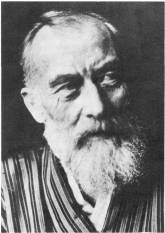- Erwin Bälz
Infobox Person
name = Erwin Bälz
caption = Erwin Bälz
birth_date =13 January 1849
birth_place =Bietigheim-Bissingen ,Germany
death_date =31 August 1913
death_place =Stuttgart ,Germany
other_names =
known_for = Foreign advisor to MeijiJapan
occupation = doctor, scientist, foreign advisor to Japan
nationality =Germany Erwin Bälz (
13 January 1849 -31 August 1913 ) was a Germaninternist ,anthropologist , personal physician to theJapanese Imperial Family and cofounder of modern (western) medicine inJapan .Biography
Son of a contractor, Bälz was born in 1849 in
Bietigheim-Bissingen inGermany . He attended grammar school inStuttgart and studied medicine atEberhard Karls University of Tübingen . He graduated at the age of 23, and subsequently worked at the medical department of theUniversity of Leipzig in 1869, and served as a medic in the German army during theFranco-Prussian War in 1870. He returned to the University of Leipzig in 1875.While at Leipzig, he treated a Japanese
exchange student , which led to the offer by the Japanese government of a two-year contract with the Medical College ofTokyo Imperial University in 1876. Bälz’s contract was renewed several times, and he ended up spending 27 years in Japan, the longest of any of the "O-yatoi gaikokujin " advisors. In 1881, he married a Japanese woman, Toda Hanako, and had two children.In the summer of 1899, Bälz visited the
Korea n capitalSeoul andBusan and undertook ethnological investigations. From22 April to3 July 1903 , he was again in Korea and, together withRichard Wunsch , undertook an expedition into the interior of the country.In 1902, he was appointed physician-in-waiting to
Emperor Meiji and the Imperial household of Japan.Bälz taught more than 800 students in Western medicine during his tenure at the University of Tokyo. During his stay in Japan, he treated some of the most influential men in the
Meiji government , including Prime MinistersIto Hirobumi andYamagata Aritomo . On Bälz' initiative, the volcanic springs of Kusatsu (200 km away from Tokyo) were transformed into the most successfulhot spring resort of Japan. He compared the area with the European spa resort of Karlsbad, and felt that mountainous air, as well as the clear waters was very conductive to health. In the year 2000, a commemorative museum honoring Bälz was erected in Kusatsu.In 1905, Bälz returned to Germany. In
Stuttgart , late in the summer of 1913, Bälz succumbed to heart disease.Legacy
Bälz was also an ardent art collector; the majority of the Japanese works collected by him are located at the
Linden Museum in Stuttgart. A stone sculpture atTübingen University reminds of his merits for the Japanese medical science. In 1961, a sister city relationship between Kusatsu and Bietigheim-Bissingen was established.After his death, his diary "Das Leben eines deutschen Arztes im erwachenden Japan" (1931, tr. The Diary of a German Doctor in Awakening Japan) was published, giving unique insights into Japan in the
Meiji era .In 1883, while staying at the Fujiya Hotel in
Miyanoshita ,Hakone , Bälz noticed that his maid's hands were chapped. He made a mixture ofglycerin and water for her, which was later sold widely in Japan under the name of "Bälz Water". It is also listed in the JapanPharmacopoeia .During his time in Japan, Bälz became a fan of
judo , and is credited with introducing the sport to Germany.References
* Baelz, Erwin. "Awakening Japan: the diary of a German doctor".Indiana University Press (1974). Translated by Eden and
Cedar Paul . ISBN: 0253310903
* Fujitani,T. "Splendid Monarchy: Power and Pageantry in Modern Japan". University of California Press; Reprint edition (1998). ISBN: 0520213718
* Keene, Donald. "Emperor Of Japan: Meiji And His World, 1852-1912". Columbia University Press (2005). ISBN: 0231123418
Wikimedia Foundation. 2010.
